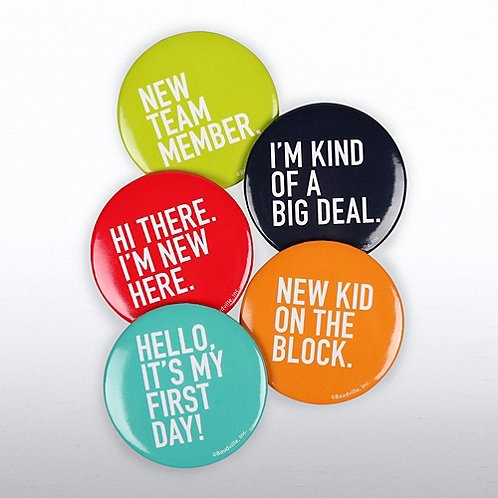I published A Fail-Proof Formula For Networking When You Hate Networking on Medium.
At The Whiteboard
Your Undergrad Major Doesn’t Matter
I published Your Undergrad Major Doesn’t Matter on Medium.
Here’s My Secret Weapon To Leadership
Giving Feedback. Most People Do It All Wrong.
Ruth published Giving Feedback. Most People Do It All Wrong. on Medium.
Being A Great Boss (Free Webinar!!!!)

I know this photo has nothing to do with webinars, but it portrays excitement! And I’m excited! (Photo by Social Cut on Unsplash)
The Unicorn of All Training Topics
Regular readers will know I teach a lot, and one of the more popular topics I cover is called Management Essentials.
Not a very catchy title, I know, but it’s not my course — I just deliver the materials.
Anyway, participants love this course; not only is it eye-opening for them (you mean manager’s have to do ALL THAT plus help me get my work done?), but it also helps them think about whether they really have it in them to manage other people, or what they need to do next to up their management skills.
We talk about what it is to be a manager or a leader or — the unicorn in business — a Leader-Manager.
We discuss the right and wrong ways to engage people, why coaching is key, what incivility is and why it’s ruining the workplace today, time management and prioritization skills, and perhaps most importantly, how self-awareness is one of the most important characteristics of a Leader-Manager.
During the course I think I’ve been asked 99 times, “What kind of training do people get when they become managers for the first time?”
Bless.
The thing is, it’s a rare (and wonderful) organization that has training for people when they become new managers.
Some organizations have Leadership Development programs, and often those are for a select few people who have been identified as having “high potential.”
So how are people supposed to learn to be good managers and to develop that potential if no one will train them?
Which brings us to this webinar.
This is a free one-hour taste of our Being A Great Boss course.
Yes it’s free, and yes it’s only one-hour, but I promise it is packed with as much content as I can in that amount of time. I will also have free templates and resources for you.
And yes, there will be an opportunity to learn more about the full self-directed, six-week online course which will be offered this fall.
Who Should Attend This Webinar?
- Brand new managers who wish there was a course on how to be the kind of boss everyone wants to work for.
- People who think they’d like to become a manager, and who want to sharpen up their skills to increase their chances of landing that dream job.
- Existing managers who would just like to be better.
Is this you? You can sign up for it by CLICKING HERE — it’s super quick and easy, and you don’t need to download any software or give a credit card.
What You Will Learn
- How To Get Recognized (And Promoted) In Your Organization. Most organizations want someone who can get the job done. That’s a manager. Most employees want to work for someone who inspires them and makes them feel good about their work. That’s a leader. Learn how to stand out in your organization by being BOTH, and up your chances of a promotion.
- How to Get People To Want To Do A Great Job Just Because They Want You To Look Good. The #1 tool in your “Manager Toolbox” is understanding your own personal habits and preferences, and recognizing how they impact your ability to inspire and communicate with other people.
- How To Get Someone To Say What You’d Rather Just Tell Them.Learning to coach was a career-changer for me, and I’ll share how it can be for you too.
- Tools, Tips, and Cheat Sheets. You’ll get easy-to-use downloadable templates to help you remember and use what you learn.
- I’ll Also Answer Your Questions Live. This is not a pre-recorded training. Join me live on August 27th and I’ll answer your questions throughout the presentation. Whether you’re just starting out or you’ve been managing people for years, I’ll show you how to use a few simple tools to turn your manager style into a leader-manager style!
You can sign up for it by CLICKING HERE
Important Details
- It’s August 27th at 12 noon Eastern Daylight Time.
- It’s one hour.
- You will get a ton of excellent content, and some free templates and tools to take away and start using right away.
Can’t Attend But Wish You Could?
That’s ok!
Sign up anyway, and I’ll send you the recorded webinar after it’s over.
Easy peasy.
You can sign up for it by CLICKING HERE
Hope to see you there!
Ruth.

6 Steps For Getting Stuff Done When You Think You’re Tired But Really Aren’t
I’m tired this morning.
I think.
For a lot of people in the Northern Hemisphere, this has been a long-ass winter. I live in Toronto, and we just came through a four-day spring storm involving, snow, ice, freezing rain, strong winds, and grey depressing skies.
My Twitter feed was full of this:

I don’t know about you, but I am strongly affected by the seasons, and I have been craving the arrival of spring like it’s my job. This last storm had me house-bound, unable to get out for activity, and cranky. I’m just exhausted.
Not really.
Exhausted is the new parent who doesn’t get more than 20 minutes of sleep at a time. Exhausted is the young resident working a 24 hour shift in the ER. Exhausted is the power crew working around the clock to restore electricity after a winter storm. You get the idea.
I understand that I’m not really tired. I’m just suffering from Winter Crank (yes, I just made that up), and that has the same symptoms as fatigue.
So what’s a girl to do?
You know I’d rather curl up on the couch and close my eyes for a bit longer this morning, but my to-do list is calling.
Six Steps For Getting Your Stuff Done When You Have Winter Crank
I mean if you’re REALLY tired (see above), go lie down. Work you do in this condition is going to be crappy anyway. Take a nap, even 20 minutes if you can. Studies show a 20-minute power nap can work wonders.
But if you’re honest with yourself and you discover you have Winter Crank, here’s what you can do:

- Stand outside for five minutes and do some deep breathing. You don’t have to meditate. Just put your phone down and go outside. Stare at something and just breathe deeply for five minutes.
- Now go back inside and make a lunch date, coffee break date, or some other date that involves talking to people outside your usual circle. If you work from home and all your neighbours are at the office, then make a plan to go to a local store and chat with the people there. Talking to people outside your family or immediate work colleagues not only boosts your energy, but will also be something to look forward to.
- Next, make a list of the absolute essential things that you have to do, despite your Winter Crank.
- Make coffee or tea with caffeine. I know, artificial energy boosters are NOT the best, but desperate times call for desperate measures. If your are caffeine free, then how about a delicious breakfast cookie or protein bar?
Put your phone on silent. Turn on music you can work to, or put on silencing headphones if you need peace and quiet. - Finally, choose the easiest thing on the list and just do it. I know a lot of people say that you should do the biggest thing first but we are dealing with Winter Crank and we need your dopamine levels to go up. It’s well known that crossing things off a list actually does that, so find the easiest thing, do it, and cross it off the list, and then go to the next easiest thing and so on until you’re done.
I guarantee that as you start crossing things off the list your fatigue will also start to fade. The little dopamine guy in your head will be making you feel so good you may even want to tackle some big project you’ve been avoiding!
OK, that may be too much to hope for, so don’t.
Just focus on what has to be done. Breathe. Talk to people. And do it.
Until next time,
Ruth.

On-boarding (A Manager’s Guide to Welcoming New Employees)
Season Three B, Episode Four. Podcast recap! (And if you missed the podcast, you can find it here.)
Podcast Recap: Season 3b, Episode 4
In this week’s podcast we focused on tips for managers to impress the heck out of their new employee by having the most awesome and fantastic on-boarding program ever. I mean, ever.
It’s really not hard, and because it’s sometimes easier to start from the negative,
Here’s What Not to Do
Be unprepared.
That’s all. Just don’t do that.
Here’s What to Do
It may be a while since you were new on your job. Plus, you’re a manager and may not exactly know what your team feels would make a rookie feel part of the team. Remember, not only are you responsible for attracting and recruiting talent, but also for making them want to stay and be productive! If they don’t feel welcome, they may bounce pretty quickly.
So, one of the smartest things you can do is to ask your current employees to brainstorm and create an on-boarding plan – they will certainly know the good and the bad of your first day on the job, and they will want to ensure the “new guy/girl” wants to stay!
This collection of ideas should be written into some kind of process or standard operating procedure that can be triggered as soon as a new employee’s start date is made public. Remember, the goal is to make this person feel valued and special – like they are kind of a big deal.

The Steps for Amazing On-boarding
- Create a checklist for welcoming a new employee. Use your team to ensure it’s realistic and awesome and fun.
- Assign a role to “owning” the checklist. (It’s important that you assign a role, not a person. If you assign this to Bob, then Bob may own it forever, no matter how many times he changes roles.)
- Ensure the checklist includes:
- A buddy. There is NOTHING as good as being assigned a buddy to help you navigate the ropes. If you have nothing else in your on-boarding program, have this.
- A schedule for the first 5-7 days, that’s designed to slowly integrate the new person into the routine. (Pretend you are a “Cruise Director,” and you’re planning the week to be productive and also have time to recover from information overload.) This would include a meeting with HR to sign papers or security to get keys or pass cards.
- Somewhere to sit, and all the required trappings – computer, phone (either desktop or company-assigned smart phone), chair, basic stationery supplies. Oh and a nameplate, with their name spelled properly.
- A printed list of login information for any required systems.
- A link to “required reading.”
- Organizational Chart (with or without photos of people)
- List of acronyms
- On-boarding manual specific to the team
- Where to find answers to common questions
- Dress code
- Corporate policies
- Travel policies
- Expense policies
- Attendance / Illness / Vacation Policies
- Internal team processes
- Emergency processes
- Processes for Flexible work
- VPN
- Expectations for hours work, being available, etc
- Who does what on the team
- Where to find answers to common questions
- A meeting with you, their new manager, on Day One. This is your chance to:
- Learn how they like to be managed, recognized, encouraged.
- Follow up on information gleaned during the interview.
- Set expectations.
- No, I don’t expect you to “hit the ground running.”
- Yes, I do expect you to get up to speed gradually.
- Yes, I know you’ll have lots of questions, and if your buddy can’t help you, come and see me.
- Come and see me even if you don’t have questions.
- Yes, you’ll have a performance plan and a learning plan, but let’s talk about that in a week or two, after you get settled.
- Yes, I check in with my team regularly – here’s when and what I expect during those check-ins.
- A formal, scheduled 30-day check in with you to ensure that their expectations have been met in their new job. You should also check in at a week, and even two weeks – it’s critical you have a formal meeting at 30/60/90 days – this is important to retaining the talent you just hired.
These days it is much easier than it used to be (even perhaps expected) to switch jobs if they don’t fulfill you and meet your expectations. Taking the time to make sure the new employee’s first day/week/month/quarter is AMAZING, will make it much less likely that all the work you did to hire someone will be wasted when they leave quickly.
Create the plan. Do the plan. Make the person feel like a rockstar.
Until next time,
Ruth.

Listening for the Story (A Manager’s Guide to Conducting a Great Interview)
Season Three B, Episode Three. Podcast recap! (And if you missed the podcast, you can find it here.)
Podcast Recap: Season 3b, Episode 3
In this week’s podcast we focused on tips for managers to be the most successful and effective they can be when conducting an interview.
Oh sorry, you thought it was just the job applicant who had to prepare for an interview? Nope. Wrong.
You’ve Got Some Work to Do
You may recall that we spent some time talking about how a job applicant needs to spend some time thinking about “their story.” How does their experience best answer potential interview questions? We coached people to learn to tell their stories in a way that ensures that you, the interviewer, is hanging on every word and seeing the obvious link to the skills and traits you are looking for.
That last bit, “the skills and traits you’re looking for,” is the key, and preparation is required to make sure that you remember, during those long hours of interview panels, exactly what it is you are hoping to hear. When you design your interview questions, consider,

“Do my questions:
- align with the both the skills and the character traits that were outlined in the Job Description and Job Ad that I posted?” (Remember, if you want to hire a Gen Z and you posted an awesome Gen Z job description, don’t slip back into tedious Gen X interview behaviours – be consistent!)
- help me uncover things that may not be on the resume?” (Behavioural qualities like emotional intelligence and comportment.)
- help me validate resume content?” (Sadly, some people hire others to write their resume, and have no idea what’s in it.)
You’ll also need to decide whether you require an assignment, and whether that should be pre-work (rare, since people can get help with these) or post interview work completed on site (more common).
Finally, consider the time available, the panel interviewing with you (do they have any questions to add or will you simply be reviewing your questions and goals with them), pare down your questions to the most important, and then create a scoring template to use in the interview.
This template can be as simple as a list of the questions, a number of points awarded to each one out of the total points available (a weighting factor), and a few words to remind you what you’re listening for. For example:
Q1: What is it about this job that encouraged you to apply? (15/100) [Listen for: passion, desire to transform things and make them better, well-spoken, confidence.]
Q2: Tell me about a time you had to get information from a variety of people in our global organization, and were not able to meet with them face-to-face? (10/100) [Listen for: problem solving skills, technology solutions other than email, seems to truly like people and talking with them.]
While I’ve Got You Here…
Asking the questions is the easy part. The hard part is listening.
Can you be fully present and engaged in what the person is saying? Is your phone buzzing in your pocket? Do you keep checking your watch? Are people tapping on your door, disrupting (even unintentionally) the interview?
Do everything you can to respect this person’s time, even if you can tell right away that they aren’t the right person. You never know who you will meet again in the future, or whether that person will be able to connect you to someone else. Also, it’s common courtesy.
Other notes on etiquette when conducting an interview:
- watch for cues you may be giving unintentionally,
- balance between serious and smiling/encouraging,
- demonstrate the type of manager you’re going to be – role model your expectations – be on time and make an effort to look like you’re excited about this,
- set expectations that the interviewee should mange their time, and
- be kind. Getting people to relax will enable you to more effectively gauge their soft skills.
Lastly, listen for the interviewee’s story, assess their behavioural qualities and how they carry themselves (making allowances for fumbles and word slips at the start due to nerves), and take notes.
Notes are important so you can have an informed discussion with the panel after the interview, so you can support your decision, and so that you can carry out a debrief, if asked, after the interview. They also give you something to focus your mind (it’s hard to think about tonight’s game or tomorrow’s presentation when you’re taking notes).
But Wait, There’s More!
Other than making your decision and bringing in your new employee (which we will cover in our next episode), there is one last thing you may need to do, if asked.
Smart people always request a debrief if they are the unsuccessful candidate. They seek to understand what they could do better next time, and even look for suggestions on how to improve.
Many managers are terrified to conduct debriefs, almost always because they are uncomfortable giving feedback. The best way to prepare to give a debrief (other than reading this blog post), is to take 5-10 minutes, and write down what you want to share with that person. There’s no need to go overboard and gush about how awesome it was to talk to them and how they did a great job but it just wasn’t the best fit and how you really liked them and it was a close call.
That’s garbage feedback and it would be better not to bother at all.
What you want to do is schedule a 15 minute phone call, and go over three things that you felt were missing from the interview, or that could be improved. Consider phrases like:
- I have a couple of ideas to share with you for your next interview.
- With respect to project management (or whatever topic you want to focus on), what I was looking for was a specific example of what YOU did, and I only heard about the team.
- We are looking for someone who has the confidence to take on difficult situations, and you seemed pretty nervous. Of course nerves are normal in an interview, but you didn’t seem able to get more settled and more confident as the interview went on.
- I think you could use some rehearsal / practice / experience.
The key is to give specific feedback that highlights what you DIDN’T see/hear, and how the candidate could take action and improve.
Lucky for you, we have a handy dandy template, and we are happy to share it with you:
Interview Debrief One Page Template
You have done a lot of work to get to the point where you’re ready to interview someone, and (hopefully) so have they. Do that last little bit of preparation so that you can listen effectively for their stories and know without question whether they are a good fit for their team. Then be prepared to give feedback and pass on your expertise – you never know when that good karma will come back to you.
Until next time,
Ruth.

I Need Someone New (A Manager’s Guide to Finding & Recruiting Talent)
Season Three B, Episode Two. Podcast recap! (And if you missed the podcast, you can find it here.)
Podcast Recap: Season 3b, Episode 2
In this week’s podcast we focused on tips for finding and recruiting the right talent. It’s 2018 y’all, and it’s no longer enough to simply post a job ad, cross your fingers, and hope for the best. Today’s talent is connected, to everything, everyone, everywhere, and so you must be too.
In order to create or build or grow the best team possible, you’re going to have to do a bit of work – not a ton, but enough.
Let’s take it one step at a time. Our first question is:
Who Are You Looking For?
The answer to this question requires a bit of self awareness. It’s awfully tempting to hire people who are just like us – after all, you know how to work with them, you know where to find them, and it’s EASY.
Of course, easy isn’t always RIGHT.
If you hire a team full of people who are just like you, you’re missing out on creativity, diversity, and the possibility of alternative, better, approaches to business.
Instead, think about your style and what gaps you’d like to fill. Are you super creative but not that great at execution? (be honest, now…) Are you a super analytical person who can get stuck in process? (My hand is raised for this one.) Are you just about getting things done, and you miss out on important details? (You know who you are…)
What about your team? Are there gaps there that you’d like to fill? Generational gaps? Gender gaps? Skill gaps?
It’s important that you do a gap assessment, not only of your own style, but also of your current team. Figure out what is missing, and think about the ideal person that could fill that spot.
Second question:
Have You Written it Down?
Do you have a Job Description? Not just a Job Ad or Posting – an actual, robust, Job Description (JD) that not only explains the job, but is written in a way to excite and attract the person you’re looking for.
It’s just smart. The one-size-fits-all JD is officially old school, so if you’re looking for creative types, then your JD better be creative. If you want a young Gen Z, then you’d better consider the things Gen Z’s love (being connected, flexible work, using the latest technology, autonomy). (Click Here for an article on attracting Gen Z talent.)
Tell a story about your company that will show your target people why they want to work for you. What is the culture like? Are there any perks on this job? Think about titles too. Are they old fashioned (Customer Service Representative) or modern (Customer Rockstar)?
Don’t forget to carefully consider the soft skills that you are looking for. More and more research exists on the importance of character in job success, so what character elements are important to you? Do you need relationship builders? People who can handle ambiguity? People who display high self-confidence and persistence? Someone who is courageous in the face of adversity? (Click here for an interesting research paper on character and leadership from the Ivey Business Journal.)
There is no one “right way” to structure your JD. So much depends on your audience, which is why the first step was thinking about WHO you’re targeting. Only then should you consider HOW you’re going to target them, and the first step in an amazing JD. (Click Here for an article on considering content and format of a JD.)
And by the way, JD writing isn’t everyone’s skillset. There are professionals out there who can help you, and it’s worth it!
Final question:
Who Knows That You’re Looking?
Google the top job posting sites, and you’ll get different answers depedning on the job category (tech, pharma, government), whether it’s a single job posting site (Monster or Dice), or a site that bundles other sites (Indeed). There are “boutique” sites, big sites, small sites, Google sites, LinkedIn sites… it can be overwhelming.
In addition to being overwhelming, you are likely to get 100’s (maybe 1000’s) of applications, and that can take time, energy, and even money (if you use a screening service) to sort through.
We aren’t suggesting you refrain from posting on a job site. What we are suggesting is that you at least supplement that listing with some networking. This helps you get the word out that you’re looking, and you never know what you’ll find out. Consider letting people know in any number of networking possibilities:
- In the workplace: your own team, larger meetings or department events, committees, intra-professional events
- Outside the workplace: conferences, professional associations, drinks with colleagues, your circle of friends
Start the conversation with, “Who do you know who…”
Once you’re connected to someone, you can encourage them to apply. Remember, this isn’t about circumventing the established hiring practice, it’s about encouraging someone to put their name in the hat. Their success within the process is then up to them!
If you do the work to make sure you really know who you’re looking for, and the work to write the job description to appeal to the person you want to hire, and then do the work to let people know you’re looking for someone, you will be much more likely find that perfect candidate.
Until next time,
Ruth.

Help Me Help You! (A Manager’s Guide to Managing Employees’ Careers)
Season Three B, Episode One. Podcast recap! (And if you missed the podcast, you can find it here.)
Podcast Recap: Season 3b, Episode 1
In this week’s podcast recap we focus on helping managers navigate the tricky business of guiding their employees as they plan their careers. There’s a fine line between helping them and doing it all for them, and the first question is:
How much do I need to do?
Many managers ask us: “What’s my role in my employee’s career plan?” In our experience, the employee is 100% accountable for determining their goals, and the manager is responsible for helping them analyze and address the gaps or steps that are needed to get them to those goals.
Of course many people really struggle with telling you what their goals are, so there is a role for manager in helping them figure that out.
You’ve likely got some combination of employees in the following categories:
- “AAA Keeners”: These are your superstar employees who always go above and beyond. They ask for extra experience, and they gobble up opportunities like leftover stuffing at Thanksgiving. They just know what to do and how to play the game. While this category might seem easy, they can also be tough to help.
- Great Performers who are “Tentative”: These are great performers who seem to need a little extra boost. They may be a bit more hesitant to throw their name into the hat. They may even turn down opportunities because they think they aren’t ready (even if you think they are.)
- “Arm Crossers”: This cadre is a bit…..difficult to say the least. They expect promotions, assistance, guidance, mentoring, job shadowing…you name it. Unfortunately they’d like to be sitting back enjoying a coffee while you do all the legwork to get them there. You are the manager after all. It’s your JOB to promote them.

For all three types, the manager’s role in career planning starts out with asking questions and coaching people to come to their own conclusions.
Examples of Questions to Ask:
- What are your goals?
- What are you looking for?
- What work are you doing right now that makes you happy?
- When have you received great feedback on something you did?
- What one thing that you did this {year, quarter, month} brought you joy?
- What have you done that you have really enjoyed (inside or outside of work?)
- What work are you doing right now that frustrates you?
- What skillsets are you great at?
- How would you rank yourself on those skills on a scale of 1-10?
- For those skills that aren’t a 10, what do you need in order to get to a 10?
Your keeners and your tenantive performers will likely do well in this type of coaching. Your Arm Crossers, on the other hand, may push back and demand that the manager do the work for them. Or say “I dunno”.
Ruth and Nicole came to a “Both And” approach, with Nicole jumping to some “solution-ing” and Ruth advising you to put the power to change on the employee’s shoulders. At some point, after all, the ball has to be in their court.
Either way you want to try to reach the arm crossers and hope that you can either get them re-engaged in the work or engaged in work elsewhere that brings them joy.

When to have these conversations?
For new employees, this is something you’d want to start talking about during on-boarding or during a 30-day check-in. For existing employees this should be a purposeful meeting once or twice a year (OUTSIDE of 1:1’s, Performance Management etc.). It’s important to give this type of conversation a special time and place to make sure that it has impact.
Take some time with your team and help people think about “what they like to do” to help them really start reaching for their dream job.
Until Next Time,
Nicole
